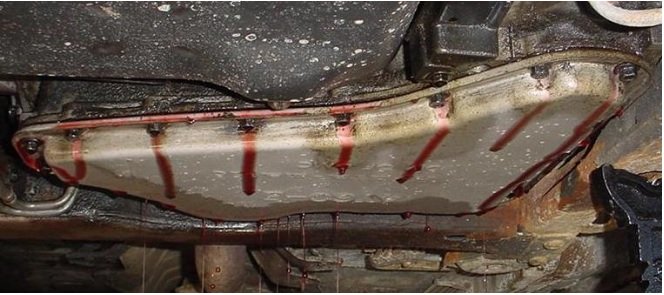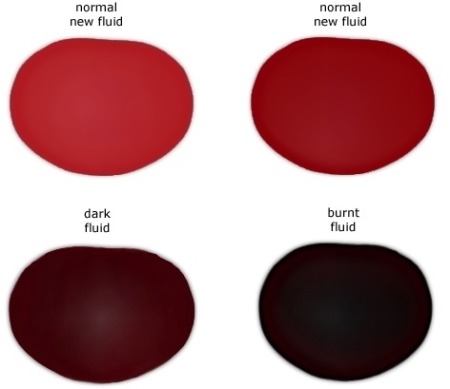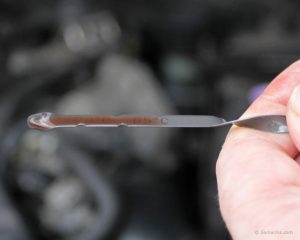In This Guide
- Symptoms to Watch for
- 8 Common Causes of Transmission Slipping
- How to Fix Transmission Slipping
- If All Else Fails
- How to Prevent Slipping
- What to Read Next
- Over to You
A transmission stays in a designated gear until a shift is performed by the driver (manual) or the computer (automatic). If yours is spontaneously slipping in and out of gear (or simply popping into neutral) while driving, I don’t need to tell you that this is a serious safety risk. When you step on the gas to take a turn or pass a car, you need power delivered to the wheels, end of story.
What Transmission Do I Have?

 Slipping doesn’t necessarily mean that your transmission is about to fail, but it is a signal that you should get it looked at by a repair shop. The clutch is most often the source of the problem for manual transmissions, while there are many different causes for automatics.
Slipping doesn’t necessarily mean that your transmission is about to fail, but it is a signal that you should get it looked at by a repair shop. The clutch is most often the source of the problem for manual transmissions, while there are many different causes for automatics.
If your car is showing one or more of the symptoms of slipping listed below, you should get it look at as soon as possible. Driving with a slipping transmission is not recommended. In addition to being unsafe, continuing to drive can turn what might currently be a small, easy to fix problem into a much bigger issue (or even transmission failure) that will cost significantly more to fix.
In this guide, we’re going to look at several factors can cause a transmission to slip, the symptoms to watch for and what you can do to solve the problem.
What Transmission Do I Have?
Symptoms to Watch for
Slipping occurs when the transmission tries to change gear, causing it either fall back into the gear that it was previously in, or drop into neutral. Diagnosing the issue can be challenging, but here are the common signs to look for:
Automatic Transmission
- Check Engine Light is on
- Transmission tries to upshift, then falls back into a lower gear
- Transmission refuses to upshift
- Transmission falls into a lower gear, causing the engine to run at a high RPM
- You step on the gas, engine RPMs increase, but the vehicle speed doesn’t
- Reverse won’t engage
- Strange or burning smell
- Unusual noises when shifting
- Hard/rough gear changes
Manual Transmission
- Transmission won’t go into gear
- Transmission inexplicably falls out of gear
- Unusual noises (like grinding) during gear change
8 Common Causes of Transmission Slipping
There are a number of possible causes, but if you can find and fix the source of the problem quickly, you can prevent it from doing further damage to the transmission.
1) Low Fluid Level
An automatic transmission relies on hydraulic pressure provided by transmission fluid to perform gear changes. If there isn’t enough fluid in the system, the transmission pump won’t be able to create enough pressure to engage the next gear. Low fluid levels may indicate a leak and can lead to overheating, and significant internal damage.
What to do: Check the Fluid Level
2) Transmission Fluid Leak
As we just explained, an automatic transmission requires hydraulic pressure to change gears. If yours is leaking, chances are there isn’t enough fluid to shift gears without difficulty.
Sometimes, the problem can be as simple as a bad transmission pan gasket, but it can also be faulty seals, ruptured fluid lines, a leak in the pan or a crack in the torque converter.

Check the fluid level and look at the underside of your car around the pan and on your drive for any sign of a leak.
What to do: Seal Leaks With Lucas Fluid
3) Burnt/Worn Out Fluid
Over time, the composition of fluid breaks down, causing it to become thinner, darker and full of contaminants. If it is too thin or burnt it will be ineffective at removing heat from the transmission and won’t be able to keep the bands and clutches properly cooled. This will cause it to overheat, preventing it from shifting gears in a normal manner.

What to do: Change the Fluid
4) Broken or Worn Out Transmission Bands
In an automatic vehicle, metal bands are used to link the gears together. If one of these transmission bands is worn or broken (often caused by overheating), that particular gear won’t be able to engage properly, causing it to ‘slip’.
What to do: Replace or adjust the band(s)
5) Clutch Problems
Manual Transmission
The clutch is the cause of slipping in manual transmissions 90% of the time (the other 10% can be attributed to leaks). A clutch disc typically lasts from 20,000 to 200,000 miles depending on your driving habits.
The clutch uses friction material (like a brake pad) to grab onto the engine flywheel and basically separate the engine from the transmission during a gear change. If the friction material or throw-out bearing (the metal bit that moves the clutch when you step on the pedal) is worn, you won’t be able to fully engage the clutch and shift gears.
What to do: Replace the clutch
Automatic Transmission
An automatic vehicle uses clutch plates inside both the transmission and the torque converter to engage the various gears. If the friction material on the plates is burnt or wears down, it might not be able to go into gear or smoothly shift gears and it may slip out of gear too.
What to do: Change the fluid and replace plates
6) Worn Out Gears
Worn gears can be caused by normal wear and tear (high mileage), ineffective fluid and overheating. Worn out gears don’t work together properly, and this can cause harsh gear engagement, slipping out of gear, failure to engage a gear, and lots of grinding and clunking.
What to do: Replace gear(s) or entire transmission
7) Solenoid Issue
Solenoids are tiny electrically activated valves that control the flow of fluid inside of a transmission. Controlling the hydraulic pressure is essential to actuating a gear change, so a faulty transmission solenoid can cause many problems, such as delayed shifts and failure to shift/engage a gear. If you’ve already checked the fluid level, then the solenoids should be your suspect. Use an OBD2 scanner to check for trouble codes and narrow down which solenoid is needs to be replaced.
What to do: Check & replace the solenoids
8) Torque Converter Issue
A torque converter is a hydraulic circuit that transfers engine power to the transmission through hydraulic pressure. If it is damaged, there won’t be enough pressure to operate the valve body and change/engage gears. A bad torque converter can also cause the engine to stall or slip out of the overdrive gear.
What to do: Check & replace the torque converter
How to Fix Transmission Slipping
If the slipping is being caused by ineffective fluid or low fluid level due to a leak, then you may be able to fix the problem yourself by checking and changing the fluid or by repairing/plugging the leak.
Fixing more serious problems such as worn or broken bands, clutches and gears require removing and taking apart the transmission. These procedures should only be attempted by those with significant auto repair experience.
Torque converter and solenoid replacements should be left to professionals.
Low Fluid Level – Check and Top-Off
 One of the easiest ways to prevent problems is to regularly monitor your fluid level. Once a month (every two weeks if you drive a lot), open the hood, locate the transmission dipstick, and check the ATF level. Always do this with the engine running, because the internal pump has to be running in order to get an accurate reading.
One of the easiest ways to prevent problems is to regularly monitor your fluid level. Once a month (every two weeks if you drive a lot), open the hood, locate the transmission dipstick, and check the ATF level. Always do this with the engine running, because the internal pump has to be running in order to get an accurate reading.
If the fluid appears dark, unusually thin, dirty, or has a burnt smell, have it changed immediately. If the it is below the optimum level indicated on the dipstick, add more fluid immediately to prevent further damage.
There are several different types of ATF, so check your owner’s manual to ensure that you get the correct type of fluid (using the wrong kind of fluid can actually cause serious damage). Typically, you add fluid to an automatic transmission by placing a funnel into the dipstick tube. If you’re unsure, refer to your owner’s manual.
Click here for a complete tutorial
Burnt or Worn Out Fluid – Drain & Refill
If your automatic transmission fluid needs to be changed, you can either do it yourself, or have a repair shop do it for you. It can be a messy job, and it does require a bit of mechanical experience to do properly.
You can get step-by-step instructions in a Haynes-type shop manual which are available at your local auto parts store, but the process goes like this:
- Jack the vehicle up and unbolt the pan. The ATF will drain as you do this, so place a catch pan and a tarp underneath it
- Remove and replace the filter
- Scrape off the old transmission pan gasket and replace
- Bolt-on the pan and fill with ATF
- Start the vehicle and check for leaks
- Use copious amounts of kitty litter to cleanup the mess that you’ve just made
Click here for a complete tutorial
Fluid Leak – Replace Part(s) or Take it to a Shop
If your transmission is leaking fluid, you need to find the source. Experienced DIY-ers can usually research the vehicle-specific symptoms, replace the offending parts and fix the problem.
If you’re not comfortable fixing the problem yourself, find a repair shop immediately. Otherwise, that little transmission leak could wind up creating a much bigger, more costly problem.
If All Else Fails
If none of the solutions above work, then it’s time to replace your transmission (you can use the guide below for pricing) or take your car to a trusted transmission repair shop
Fair Remanufactured Transmission Cost by Vehicle
- Use the Year / Make / Model lookup tool above to determine what transmission your vehicle has.
- Find your transmission model in the table below for fair prices from reputable suppliers and fair labor for local installation at an auto repair shop.
- Get a quote on a remanufactured transmission by email.
How to Prevent Slipping
Many transmission problems are easily preventable by following routine checks and maintenance procedures. Worn out fluid is usually the root cause of a slipping transmission, so have your fluid and filter changed every 30,000 to 50,000 miles or every two years – whichever comes first. In addition, check the fluid quality and level often to make sure it will keep things cool and perform gear changes effectively.
What to Read Next
How to Check Transmission Fluid
How to Change Transmission Fluid
10 Most Common Transmission Problems
Find a Transmission Shop
What Transmission Do I Have?

Over to You
We’re interested to know – is your transmission slipping? What other symptoms have you noticed? Let us know by leaving a comment below!

It’s shifting from high to low back to high
Few days ago my 2008 Ford Edge Slipped out of gear into low, rpm’s went high and after shifting couple time ran normal except there is a low humming noise now
It won’t shift into 3 Rd gear when it time for it to shift it just slips and won’t go iin
Th700r 90 chevy 5.7 automatic..check engine light comes on at 50 mph after 10-15 min of driving it starts slipping then stops moving in any gear until shut off and allowed to sit for awhile…fluid levels are ok.
My transmission on my 1999 F350 Powere stroke is slipping in and out of 3 gear and over drive how can I fix this is the solenoid going bad
Driving down the road and suddenly the odometer will drop to zero the RPM shoot up and there’s a loud humming high-pitched humming noise coming from the engine as if it’s not in gear anymore it’s an automatic vehicle to 2007 Chevy Uplander and if I push down on the accelerator it will kick back into gear
My 200 Mercedes Benz e430 transmission emits a bad smell and then it won’t shift properly and will not shift to third gear but the reverse shifts fine with the first gear.
Can’t find plugs or us their a vacuum line
My transmission has been slipping and presents a code: P1870 Chevy S-10 1998 LS 4.3L 262Cu. In. V6 Please Advise Thank You EPB
I have a 96 ram four by four ,the transmission slips in and out of gear as soon as it’s put in gear ,could this be a siliniod or torque converter
2000 Tahoe, 4L60E, over 200k miles, while the vehicle is in drive, accelerator engaged, rpms increase but vehicle does not increase speed. Same issue in 3rd gear, HOWEVER…..
1ST AND 2ND Gear work fine…..????
Yes, I checked the fluid. But why do all other gears work except D and 3.
Same as Dale, do I need a whole new transmission
2000 Tahoe, 4L60E, over 200k miles, while the vehicle is in drive, accelerator engaged, rpms increase but vehicle does not increase speed. Same issue in 3rd gear, HOWEVER…..
1ST AND 2ND Gear work fine…..????
Trans was slipping on occasion from 1st to 2nd in the last few week. (It passed emissions last month and there was no check engine light. Car has 70K miles.) Once above 30 miles a hour it was fine. Shop said battery voltage was load causing a code, the fluid level was also low , fluid was black and there hoses were leaking. So, battery replaced, fluid and hoses replaced. Now here is where I am confused and suspisicous. They said it drives better, but still not “perfect”. They said the car computer may need to reset and learn new shift patterns. So did they just cost me $950 and I am going to have to get a new trans anyway? The computer thing is what threw me.
The transmission works properly in P, R, 1-2. As soon as the transmission shifts to D-3, the engine RPMs increase and car speed decreases. If the transmission is manually selected to 1-2, the car moves normally. My issue seems to be with D-3 not engaging. Is this a symptom of slipping bands?
I have a2002 gmc 2500 serria I put a new rear main seal in an put transmission back in now when you first get in it it want barely go into gear it just slips intll it warms up then it shifts fine what would cause that thanks
peeweeholloway@gmail.com
Will not
Engage
Hey my transmission only allows me to go 20mph before it begins to completely slip. Nothing wrong with reverse or any other gear than second(automatic)
I have a Honda Pilot 2005 it only slips in fifth gear after about 40 miles. I have to pull over for maybe 10 or 15 minutes. I have already changed the fluid. Any ideas? ?
Mom gunned it at a light and barely made it home, reverse is out and moves forword real slow at high rpms. 95 ford Taurus
Slipping in 1,2,3 and 4 i do have a fluid leak. I bought the truck and could tell it had not been under its power. Since purchasing the truck the diesel is running and after i drive for about 25 minutes the slip seems to almost stop.
My envoy started slipping a few days ago . I changet fluid , it was burnt . Only the pan fluid . It still slips and getting worse . If I drain ALL THE FLUID WILL IT MAKE ANY DIFFERENCE? I am very hard on my cars so it’s not surprising. But if there is any other repair slipping tips I would live to hear them. I’m thinking that if there is any adjustment in bands that I can do that I will give that a try . I cant pay a shop that will be too expensive .